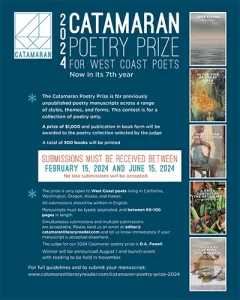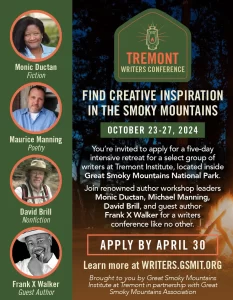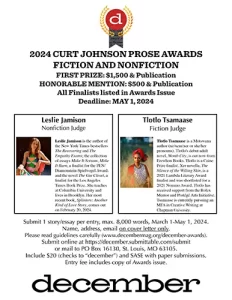Young Tambling
Kate Greenstreet, painter, graphic artist, and poet, has published two previous books of poetry with Ahsahta Press: case sensitive (2006) and The Last 4 Things (2009). The back cover of Young Tambling, her third outing, is stamped “Based on a true story.” Fittingly, the first of its six sections, “Narrative,” begins with a retelling of Young Tambling, a Scottish ballad wherein the hero is not Tam or Tambling or Tom Line. Instead, the story belongs to the girl telling it, driving it: “for once, the hero is the girl and her point of view and actions are primary.” This story frames the mixed-genre artist’s memoir; also serving as a frame are epigraphs, each of which is printed at the beginning of a section but erased so only the section is visible, and later in the section, fully legible. Greenstreet’s black and white paintings, photographs, and lists round out the collection.
Kate Greenstreet, painter, graphic artist, and poet, has published two previous books of poetry with Ahsahta Press: case sensitive (2006) and The Last 4 Things (2009). The back cover of Young Tambling, her third outing, is stamped “Based on a true story.” Fittingly, the first of its six sections, “Narrative,” begins with a retelling of Young Tambling, a Scottish ballad wherein the hero is not Tam or Tambling or Tom Line. Instead, the story belongs to the girl telling it, driving it: “for once, the hero is the girl and her point of view and actions are primary.” This story frames the mixed-genre artist’s memoir; also serving as a frame are epigraphs, each of which is printed at the beginning of a section but erased so only the section is visible, and later in the section, fully legible. Greenstreet’s black and white paintings, photographs, and lists round out the collection.
Like so many discussions of art, Tambling shows us the lens through which the writer (or her created persona) sees the world. In this case, the portrait is from somewhere other than center: “Ten brothers sat for a portrait / I was behind them / For so long.”
The hero of Tambling gets to move the story, but she is also sometimes in the background, observing, cataloguing, fighting to be heard:
Breaking things because I couldn’t hold onto them.
Today,
like everyday, what’s missing,
What she tells is often fragmentary, misremembered or partially heard. This is more honest because the purpose is not beauty as we traditionally represent it but “to learn. To represent a life.” The forms, such as prose paragraphs, dialogue, couplets and caption, as well as the language she uses are both accessible and fantastical. Like the protagonist, the reader is two places at once:
Later, when we were walking, I could see that she
was spelling, in her mind, the words that we were
saying, and from time to time she stopped to write
one down if the letters were right.
At once, the words of a writer, observing her world and striving to capture it correctly, and of a fairytale witch, above the action and bending it to her, Greenstreet gives us the strange power of a girl struggling for human connection and creating space for it in an oppressively mundane and already hectic world.





